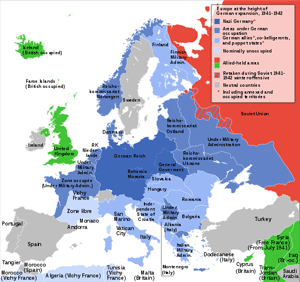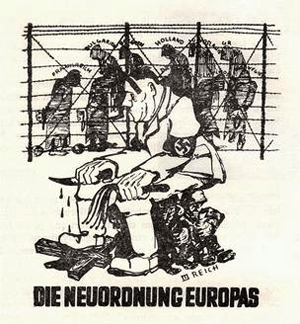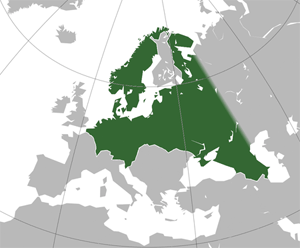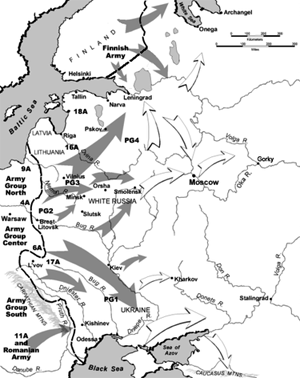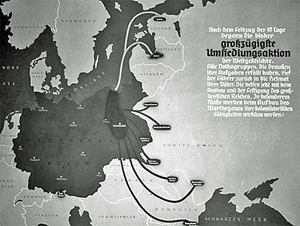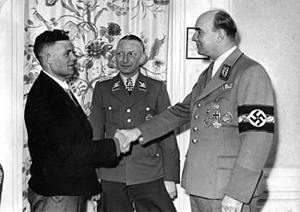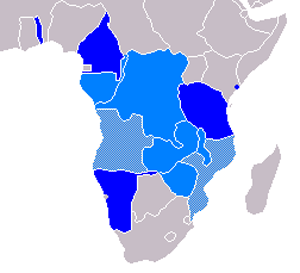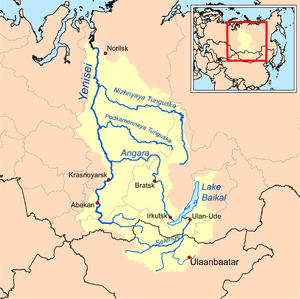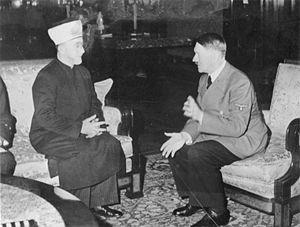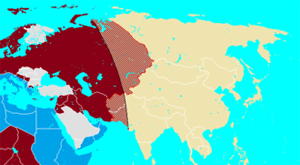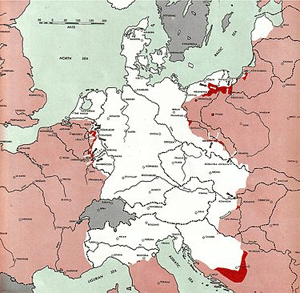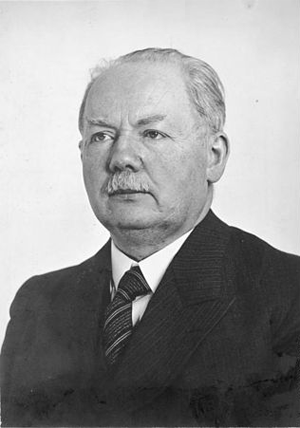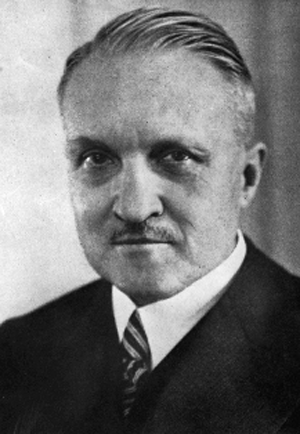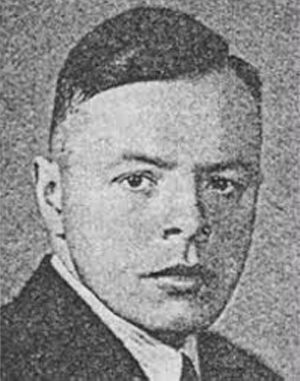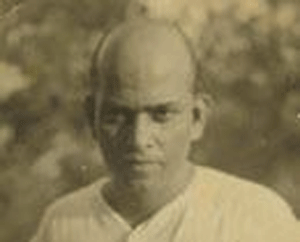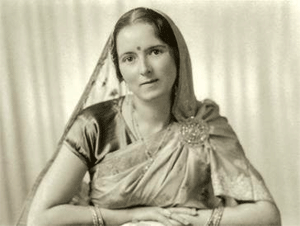by Wikipedia
Accessed: 9/22/18
NOTICE: THIS WORK MAY BE PROTECTED BY COPYRIGHT
YOU ARE REQUIRED TO READ THE COPYRIGHT NOTICE AT THIS LINK BEFORE YOU READ THE FOLLOWING WORK, THAT IS AVAILABLE SOLELY FOR PRIVATE STUDY, SCHOLARSHIP OR RESEARCH PURSUANT TO 17 U.S.C. SECTION 107 AND 108. IN THE EVENT THAT THE LIBRARY DETERMINES THAT UNLAWFUL COPYING OF THIS WORK HAS OCCURRED, THE LIBRARY HAS THE RIGHT TO BLOCK THE I.P. ADDRESS AT WHICH THE UNLAWFUL COPYING APPEARED TO HAVE OCCURRED. THANK YOU FOR RESPECTING THE RIGHTS OF COPYRIGHT OWNERS.
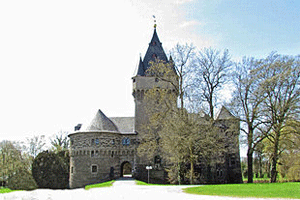
Schloss Hülchrath, view of the Hochschloss from northeast
Castle Hülchrath is a former kurkölnische country castle in Grevenbroicher district city Hülchrath in the Rhine district Neuss . The moated castle on Gillbach goes back to a castle of the 12th century and has preserved a large part of its medieval fabric.
The history of the complex illustrates very well the typical development of a noble residence in the Rhineland : Through continuous growth, a wooden moth changed over a two-part moated castle in the Renaissance to a palace complex , which was destroyed in the 17th century at the beginning of the 20th century in the style of Neo-Gothic was rebuilt. In the Middle Ages, the Hülchrather plant was one of the most important provincial castles in the Cologne territory. [1]
The palace complex is now privately owned and is partly used for residential purposes. An inside inspection is not possible. The courtyard area of the outer bailey and the grounds are accessible to visitors free of charge.
Castle and place Hülchrath stand as a monument area under monument protection . In addition, the castle has been protected since 27 March 1985 as a monument . [2]
History
The Beginnings
When exactly the first castle Hülchrath emerged in the marshy lowlands of the Gillbach, a tributary of the Erft , is still not clear. It was presumably the seat of the Counts of Gillgau , who were appointed provincial counts by the ruler, the archbishop of Cologne , and administered the district for him. From 1122 this task was performed by the Counts of Saffenberg , who probably came to the office through the marriage of Adolf von Saffenberg with Margaretha von Schwarzenburg, the niece of the Archbishop Friedrich I von Schwarzenburg . Already in 1120 Hülchrath was first mentioned by name as Holkerode in a document and was described there as castellum vetustissimum et munitissimum [6] ( German very ancient and heavily fortified castle ). The plant stood near an old Roman road that led from the former Roman camp in Grimlinghausen near Neuss to Kaster . Early on, a settlement would have formed around the castle, the 1321 was designated [8] as oppidum . When Adolf's son Hermann died around 1175, Hülchrath came to the counts of Sayn , because Hermann's daughter Agnes had married Henry II of Sayn in 1173. 1202 was the son of the couple, Henry III. , Lord of Hülchrath. Under him, the celestial sovereignty over the castle apparently lost temporarily, because in a document from the year 1206, she was referred to as his allod . In his time as lord of the castle was probably also the first major expansion of the plant, this being surrounded by a polygonal ring wall with flanking towers .
As Henry III. 1247 died without descendants (his daughter had died before him), Hülchrath came to his nephew Simon von Sponheim , who exchanged it in 1248 against other areas with his brother Heinrich , Herr von Heinsberg . This pledged castle and rule temporarily to William IV , the Count of Jülich , it later redeemed, because when Heinrichs daughter Adelheid (also Aleidis) on September 22, 1255 married Dietrich , later Count of Cleves , came the castle as a dowry to the Klever counts. After the death of Dietrich V Hülchrath came to his son Dietrich Luf II , who called himself from 1296 Count of Hülchrath. In 1298 he sold the county and castle to his brother Dietrich VI. von Kleve and got her back as an after-loan . 1305 followed him as the owner of Hülchrath his eponymous son from the marriage with Elizabeth of Virneburg. Eight years later he had to give the Cologne archbishop a right of first refusal at the castle, which took Henry II of Virneburg on 12 June 1314 to complete. For 30,000 Cologne Mark [12] moved castle and county to the Cologne cathedral chapter . However, only 15,000 marks were payable because many of the lands belonging to Hülchrath were pledged. [13] Dietrich Luf III. should keep the county until full payment. This was the case after many delays in late 1331, but as early as 1323 Hülchrath became a Kurkölnische office. [14]
Kurkölnische Landesburg
Kurköln had the Hülchrather weir built in the 14th and 15th centuries strong. It was then one of the most massive castles in the Rhineland and was designed for demonstration of power and representation at the same time. As a regional castle Hülchrath fulfilled the same functions as the kurkölnischen plants in Linn , Zülpich , Lechenich , Kempen and Zons . Particular importance was attached to it as a strategically important base against the largest territorial adversary Kurkölns in this area, the Duchy of Jülich, because the neighboring Grevenbroich belonged since 1307 to the Jülich possessions. In 1499, troops of the Jülich Duke besieged the castle but were unable to capture it. The settlement was also unscathed, contrary reports result from a misreading of the Cologne Chronicle Johann Koelhoff the Younger . [16]
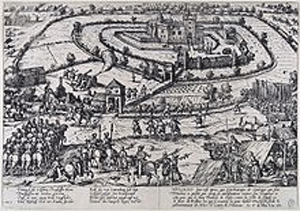
The Siege of Hülchrath in the Truchsess War, engraving by Frans Hogenberg
During the Truchsess War Gebhard Truchsess von Waldburg fled with his wife Agnes von Mansfeld-Eisleben behind the protective walls of the Hülchrather castle, whereupon imperial troops besieged them under the leadership of the choirmaster Friedrich von Sachsen-Lauenburg , drained their moats and shot at them with cannons , After thirteen-day cannonade, the lock crew finally gave up and handed over the facility to the besiegers on March 16, 1583. [17] [18] Gebhard Truchsess von Waldburg and his wife were previously escaped through a secret passage . The place Hülchrath was then destroyed, the castle heavily damaged. In the same year they went to eliminate the damage, with stones of the previously looped upper monastery were used at Neuss . After the cathedral chapter had ceded the meantime converted into a castle complex 1605 to the archdiocese of Cologne, the then coadjutor and later Elector Ferdinand of Bavaria in 1608 so began to fix Hülchrath again. The ruined place was newly founded and created on schedule in the northeast of the castle. Previously, he had located in the southeast of the plant. Subsequently, the village was combined with the outer bailey and the high castle to a closed fortification system with bastions , ramparts and moats. She took over the function of a second outer bailey. The work lasted until 1612. [22]
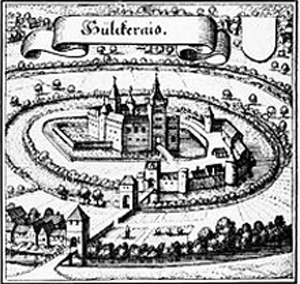
Figure of Hülchrath Castle in Matthäus Merian's Topographia Germaniae , 1646
Also during the Thirty Years' War Hülchrath was besieged in the Hesse War . After five days of shelling Hessian-weimar troops were able to take place and castle in 1642, but were only a short time later expelled by imperial and Bavarian soldiers. In the French-Dutch War , the castle complex on October 26, 1676 met the same fate, this time there were soldiers of the Prince Bishopric of Osnabrück , who besieged the castle and took. In 1688, the fortifications erected eighty years before were demolished, leaving only the outer bailey and the prison in the high castle. The castle was still inhabited, but due to lack of maintenance followed a gradual decline.
The castle to the present time
When after the Peace of Lunéville in 1801 the existing since 1798 four left-bank departments were recognized as French territory, in 1802 the secularization was carried out. As a result, the French government sold in 1803 the castle for 4929 francs to the last Kurkölnischen bailiff Heinrich Joseph von Pröpper. His descendants lived in the castle until the end of the 19th century, but had already sold it in 1874 to Prince Alfred zu Salm-Reifferscheidt. He sold it in 1901 to Heinrich Maas, with which the castle first came into civil hands. After six years, the plant changed again the owner, because in 1907 it acquired the Duesseldorf-based Freiherr Enno Rudolf von Bennigsen and had the ruins rebuilt in the historically-romantizing style of the Neo-Gothic. However, he did not resort to existing buildings, but let the renaissance-temporal games lie down and build completely new buildings in the northern part of the Hochschlosses along the ring wall. Other owner changes followed. Among the temporary owners of the castle Hülchrath belonged among other things a Mr. Queckenberg as well as in the 1920s four manufacturers from Rheydt. [27]
After the buildings had belonged to the Landbauernschaft Rheinland in 1930, [28] followed in the Third Reich, the National Socialists as users. From 1937 on, the facility served as a small NS-Ordensburg, in which, among other things, members of werewolf groups were trained to carry out sabotage after the occupation of the German Reich by the Allies. From there, for example, the assassination of Aachen Lord Mayor Franz Oppenhoff was organized. After the Second World War, the castle buildings were used temporarily as accommodation for war refugees from the former German eastern territories. In 1954, the Mönchengladbach family Wennmacher bought the plant and had the war damage repaired until 1959. Today, the outer bailey is used for residential and commercial purposes. The Hochschloss is home to a restaurant, which also hosts numerous events on the grounds of the castle. In addition to knight's meals and concerts, there is also a medieval market every year.
Architectural History and Architecture
Development
Castle Hülchrath went through seven construction phases in its history, which - with one exception - are still legible on today's condition.
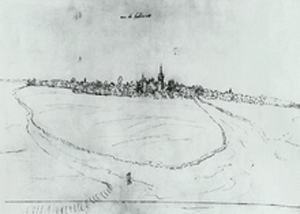
Hülchrath on a drawing by the Walloon artist Renier Roidkin
The roots of today's plant lie in a high medieval moth, which bears much resemblance to Linn Castle. The Moth Hill was probably surrounded in the 13th century [30] with a polygonal ring wall with three flanking towers. After the Cologne cathedral chapter had taken over the plant in the first quarter of the 14th century, it was extensively expanded in the style of the Gothic style and strongly fortified. Presumably at that time, the Romanesque keep of the Motte was eliminated. The extensions end of the 14th / beginning of the 15th century included, for example, the newly built Palas on the southern ring wall and an elevation of the same, which thus received a coat wall- like appearance. During the expansion of the castle, the gate tower received the fortification function of the old, central main tower, which is why it is often mistakenly referred to as a keep. In addition, the foundation stone was laid for today's forecourt with its commercial buildings and its gate tower. It was separated from the main castle by a moat , which could be overcome by a drawbridge , [31] and even secured by a upstream, second moat. South of the palace was built in the 15th century to secure a kennel .
In 1608, Ferdinand of Bavaria erected the bastion tower east of the gate tower in the high castle. At the same time, a new entrance gate was built between the two towers, while the old one was walled up. The medieval Palas received in the same year rich architectural jewelry in the forms of the Renaissance . All these changes took place in the context of work that united the Hochschloss, the outer bailey and the newly founded at that time settlement Hülchrath to a closed defense system.
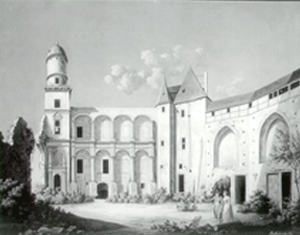
Courtyard of the castle on a painting by F. A. Reuters
In a fifth phase, the fortified complex in the 17th century was transformed into a castle in the style of the Italian Renaissance . The style had made its way to the Rhineland via the Spanish Netherlands . The result was a building wing along the northwestern ring wall, which had two-story arcades to the courtyard. At its western end stood a slender tower designed for astronomical observation, with stone-walled porches , windows, and cornices . The renaissance-era elements are no longer extant today, but were detailed in four gouache frescoes by F. A. Reuter dating from 1795, which have disappeared today.
At the time of the Baroque changes were made in the Vorburg area. On the northeastern side, a new gate construction with a stone access bridge was built. He was in flight with the high-rise entrance, according to the architectural taste of the time. The old Gothic gate tower of the bailey at the south end was meaningless and was abandoned. The seventh and final construction phase consisted of the romanticizing reconstruction of the high castle at the beginning of the 20th century, in which, however, the medieval basic structure of the plant was largely preserved.
Description
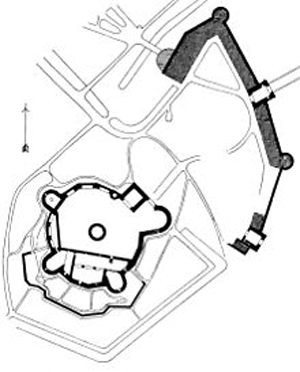
Floor plan of the castle of Ludwig Arntz
Schloss Hülchrath is a two-part complex consisting of a high castle and a north-eastern forecourt. The high castle has the form of a ring castle , because the 1.75 meter [33] thick enclosure wall looks at first glance circular, but in reality is polygonal. Their shape reflects the layout of the high medieval predecessor, and even today the moth mound and the surrounding ditch can be seen in the terrain. The ring wall was increased in Romanian times with bricks , so that these new lots differ greatly from the older substructure. This consisted in the lowest part of horizontally layered basalt and Liedberger sandstone with leveling layers of tuff . Above it rose masonry of tuff. In the enclosure wall west of the gate tower are still good to see the old, 0.7 meters high [33] high battlements of the low ring wall. Her heiress had a protruding battlement , which was supported by a pointed-arched sandstone consoles frieze . He is still recognizable today from the outside. The ring wall had three semicircular shell towers as flanking. Near the southeast of them seems to have been the castle chapel . [30] The northeastern one of them is called Hexenturm and reminds of a dark episode of the Hülchrath plant. This became famous in the 17th by numerous witch trials , in which the so-called water sample was performed in the moat. In 1629 in Hülchrath 13 women were burned as alleged witches at the stake . [34] A saying of the population at that time said: "Who in Hülchrath goes over the bridge, rarely or never returns." [35] Another half-open tower is in the northeastern part of the ring wall. The so-called bastion tower was built there only in the 17th century.
In the middle of the area enclosed by the ring wall stands the stump of an old round tower with a diameter of 8.5 meters. These are the rebuilt remnants of the former motto tower. So far it has not been clarified whether it was a keep or a residential tower . However, the assumptions of historians go because of the small size in the direction of a keep. In the southern part of the castle courtyard, the ruins of the well over 35 meters long [30] long palace, where the ring wall and the two southern shell towers were included in the construction. Numerous bar holes on the inside of the ring wall still point to the basement housing construction. On the ground floor was a large two-nave hall with barrel vault , which served as Dürnitz in the Middle Ages. [36]
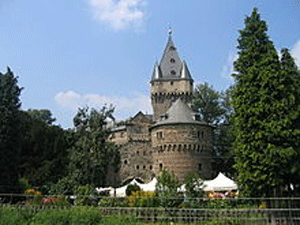
Hochschloss, view from the east
The most striking component of the Hochschloss is the 64 meter [19] high gate tower on the north side. The five-storey building was the tallest tower in the complex and not only fulfilled a defense-related but also a symbolic function. The lower part of its masonry consists mainly of basalt, while the higher parts consist of tuff. He has a high, slated pyramid roof , as it was typical of the Gothic period. The top floor of about 8 × 9 meters [3] measuring tower consists of a cantilevered battlements with four pentagonal Scharwachttürmchen . The floor rests on a round arch frieze, which is supported by trachyte consoles. Some of these have Hebrew inscriptions, because there are recycled grave stones of the old Jewish cemetery Judenbüchel Cologne, devastated in the plague year of 1349 by angry Cologne citizens and his grave stones were misappropriated as a building material. [35] At a courtyard-side corner of the gate tower stands a slender staircase tower with a wooden spiral staircase . The windows are framed by trachyte stones and are therefore made of the same material as the gurney of the arched main portal. [27] [38]
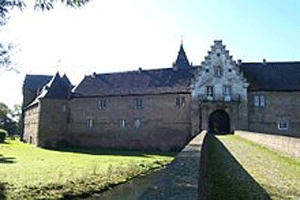
The southern part of the outer bailey including today's gate
The Hochschloss is connected to the outer bailey by a bridge-like earth rampart. The former separating moat is now drained but still clearly visible as a deep terrain sink. The two-storey outer bailey can be reached from Hülchrath via a wide nine-arched brick bridge over the moat. It consists of three brick walls with slated roof pitches . At the corners of the buildings there are round towers with eight-sided helmets . The two floors of Vorburgtrakte are clearly separated from each other by a block frieze. The corner towers and the field-side outer walls and the former gate tower at the southern end of the outer bailey date back to the 14th century. Around the middle of the northeast wing is today's castle gate with stepped gable . The round-arched passage with house entrances is flanked by two pilasters . Above his architrave is a balcony with a wrought-iron railing.
The southern end of the outer bailey is formed by the former gate tower from the Gothic period. Its three storeys rise on an approximately 8.5 × 8.5 meters [3] measuring floor plan. Behind the arcade portal on the outside there was a barrel vaulted passage, but the portal is walled up today. The still existing, framing aperture testifies to a portcullis , which was previously embedded in the gate. On the outside of the top floor remains of a pointed arch frieze with Maschikulis are recognizable. Above it was a battlement with Wurferker . This served at the same time as a groove for the chain of the fall grid. Until the year 1810 [39] the weir-building-ground had turret towers at the corners, but these were demolished, so that today only their console-stones are preserved. After being used as a barn in the 19th century, [40] it now serves as a dwelling.
In 1995, the parks of the castle were redesigned for the Landesgartenschau . In them you can still find remnants of the former trench system, some of which are pond-like and are fed by the Gillbach, as well as a valuable stock of trees. In addition, there are still some relics of arcades from hornbeams to see. [34]
Literature
• Paul Clemen : The art monuments of the district Grevenbroich (= The art monuments of the Rhine Province, Volume 3, Dept. 5). L. Schwann, Dusseldorf 1897, pp. 43-51 ( digitized ).
• Georg Dehio : Handbook of German Art Monuments . North Rhine-Westphalia, Part 1: Rhineland . Deutscher Kunstverlag , Munich / Berlin 2006, pp. 444-445.
• Brigitte and Walter Janssen: Castles, palaces and court festivals in the district of Neuss . Neuss district administration, Neuss 1980, ISBN 3-9800327-0-1 , pp. 120-139.
• Hans Kisky: Hülchrath (= Rheinische Kunststätten, issue 9). Neusser printing and publishing house, Neuss 1964.
• Hans Kisky: Castles and manors in the Rhineland . Weidlich, Frankfurt am Main 1960, p. 41-43.
• Werner Meyer: German castles, palaces and fortresses . Volume 1. Flechsig, Würzburg 2002, ISBN 3-88189-469-1 , p. 137-141.
• Gregor Spohr, Ele Beuthner: How nice to dream here. Castles on the Lower Rhine . Pomp , Bottrop / Essen 2001, ISBN 3-89355-228-6 , P. 46-49.
• Theodor Wildeman : Schloß Hülchrath on the pictures of Paretz . In: Arnold Mock (Hrsg.): Lower Rhine yearbook . Volume 4. Association Left Lower Rhine , Krefeld 1959, ISSN 0549-1665 , pp. 73-74.
• Christian Wiltsch: Neukirchen-Hülchrath (= Contributions to the History of the City of Grevenbroich, Volume 18). 1st edition. History Society for Grevenbroich and surroundings, Grevenbroich 2006, pp. 99-106.
• Jens Wroblewski, André Wemmers: Theiss Castle Guide Lower Rhine . Konrad Theiss , Stuttgart 2001, ISBN 3-8062-1612-6 , S. 78-81 .
Web links
Commons: Schloss Hülchrath - Collection of pictures, videos and audio files
• Website of the castle
• Entry by Karin Striewe to Hülchrath Castle in the EBIDAT , the scientific database of the European Burgeninstitut
• Schloss Hülchrath in the Burgerbe blog
Item Details and Notes
1. Hanns Ott: Rhenish water castles. History, forms, functions . Weidlich, Würzburg 1984, ISBN 3-8035-1239-5 , p 146.
2. Brief description of the monument authority on limburg-bernd.de , accessed on 4 July 2014.
3. Entry of Karin Striewe to Hülchrath Castle in the EBIDAT , the scientific database of the European Burgeninstitut
4. C. Wiltsch: Neukirchen-Hülchrath , 2006, p. 99.
5. C. Wiltsch: Neukirchen-Hülchrath , 2006, p. 100.
6. J. Wroblewski, A. Wemmers: Theiss castle guide Niederrhein , 2001, p. 78.
7. J. Wroblewski, A. Wemmers: Theiss Castle Guide Niederrhein , 2001, p. 79.
8. G. Dehio: Handbook of German Art Monuments. North Rhine-Westphalia, Volume 1: Rhineland . Deutscher Kunstverlag, Munich / Berlin 1967, p. 496.
9. Walther Zimmermann, Friedrich von Klocke (ed.): North Rhine-Westphalia (= Handbook of Historical Sites of Germany, Volume 3). Kröner, Stuttgart 1963, p. 306.
10. Theodor Joseph Lacomblet : document book for the history of the Lower Rhine . Volume 2. Wolf book printing, Dusseldorf 1846, No. 1011 ( digitized ).
11. Hermann Aubin (ed.): The Weistümer the Electorate of Cologne. Volume 1: Amt Hülchrath . Reprint of the 1913 issue. Droste, Dusseldorf 1996, ISBN 3-7700-7593-5 , p. 309.
12. According to C. Wiltsch: Neukirchen-Hülchrath , 2006, p. 101. According to other sources, the purchase price was 30,000 pounds of silver or 30,000 guilders.
13. C. Wiltsch: Neukirchen-Hülchrath , 2006, p. 101.
14. C. Wiltsch: Neukirchen-Hülchrath , 2006, p. 102.
15. A Corneel Voigt , Stefan Frankewitz : Flight over the Rhineland . Pomp, Bottrop / Essen 1996, ISBN 3-89355-138-7 , p. 28.
16. C. Wiltsch: Neukirchen-Hülchrath , 2006, p. 457, note 32.
17. Friedrich Everhard von Mering : History of castles, manors, abbeys and monasteries in the Rhineland and the provinces of Jülich, Cleve, Berg and Westphalia . Volume 7. Lengfeld, Cologne 1844, p. 114 ( digitized ).
18. C. Wiltsch: Neukirchen-Hülchrath , 2006, p. 103.
19. Ludger Fischer : The most beautiful castles and castles on the Lower Rhine . 1st edition. Wartberg, Gudensberg-Gleichen 2004, ISBN 3-8313-1326-1 , p 36.
20. B. and W. Janssen: castles, palaces and court festivals in the circle Neuss , 1980, p. 129.
21. P. Clemen: The monuments of Grevenbroich , 1897, p. 44.
22. G. Dehio: Handbook of German Art Monuments. North Rhine-Westphalia, Volume 1: Rhineland , 2006, p. 444.
23. Heinrich Hubert Giersberg: History of the parishes of the deanery Grevenbroich (= history of the parishes of the archdiocese of Cologne, volume 12). Bachem, Cologne 1883 ( online ).
24. Wilhelm Janssen, Small Rhenish History, Dusseldorf 1997, pp. 261-264.
25. G. Spohr, E. Beuthner: How nice to dream here. Castles on the Lower Rhine , 2001, p. 47.
26. In the literature, these two different details can be found throughout.
27. Käthe Maas-Krickelberg: Hülchrath Castle . In: Bergisch-Jülich history sheets. Monthly magazine of the Bergisch History Association for the Duchies of Berg and Jülich . 6, no. 6, 1929, p. 118.
28. Chronicle of the castle on schlosshuelchrath.com ( Memento of 4 March 2016 in the Internet Archive )
29. Volker Koop: Himmler's last contingent. The NS organization "werewolf" . Böhlau, Cologne / Weimar 2008, ISBN 9783412201913 , p. 128 ( digitized ).
30. J. Wroblewski, A. Wemmers: Theiss Castle Guide Niederrhein , 2001, p. 80.
31. H. Kisky: Hülchrath , 1964, p. 6.
32. J. Wroblewski, A. Wemmers: Theiss Castle Guide Lower Rhine , 2001, p. 81.
33. P. Clemen: The monuments of the district Grevenbroich , 1897, p. 50.
34. Ferdinand GB Fischer : Excursion destinations on the Lower Rhine. Beautiful castles, palaces and moths from the Alps to Zons. Pomp, Bottrop / Essen 1998, ISBN 3-89355-152-2 , p. 28.
35. Karl Emerich Krämer : From Brühl to Kranenburg. Castles, palaces, gates and towers that can be visited . Mercator, Duisburg 1979, ISBN 3-87463-074-9 , p 34.
36. W. Meyer: German castles, palaces and fortresses , Volume 1, 2002, p. 138.
37. G. Dehio: Handbook of German Art Monuments. North Rhine-Westphalia, Volume 1: Rhineland , 2006, p. 445.
38. P. Clemen: The art monuments of the district Grevenbroich , 1897, p. 49.
39. Harald Herzog: Rhenish palace buildings in the 19th century (= Landeskonservator Rheinland, Arbeitshefte, Volume 37). Rheinland-Verlag, Cologne 1981, ISBN 3-7927-0585-0 , p 66.
40. P. Clemen: The art monuments of the district Grevenbroich , 1897, p. 48.

